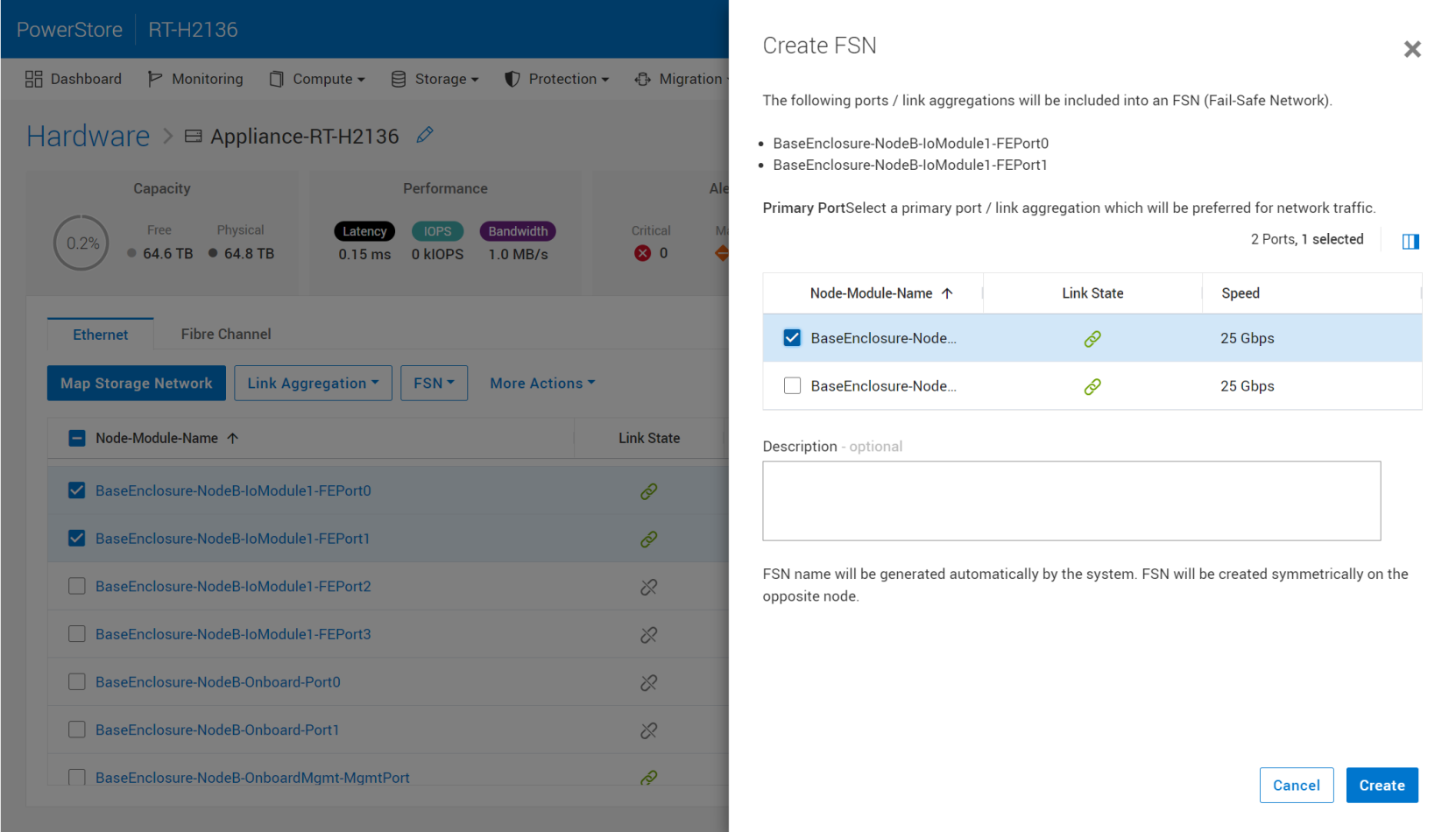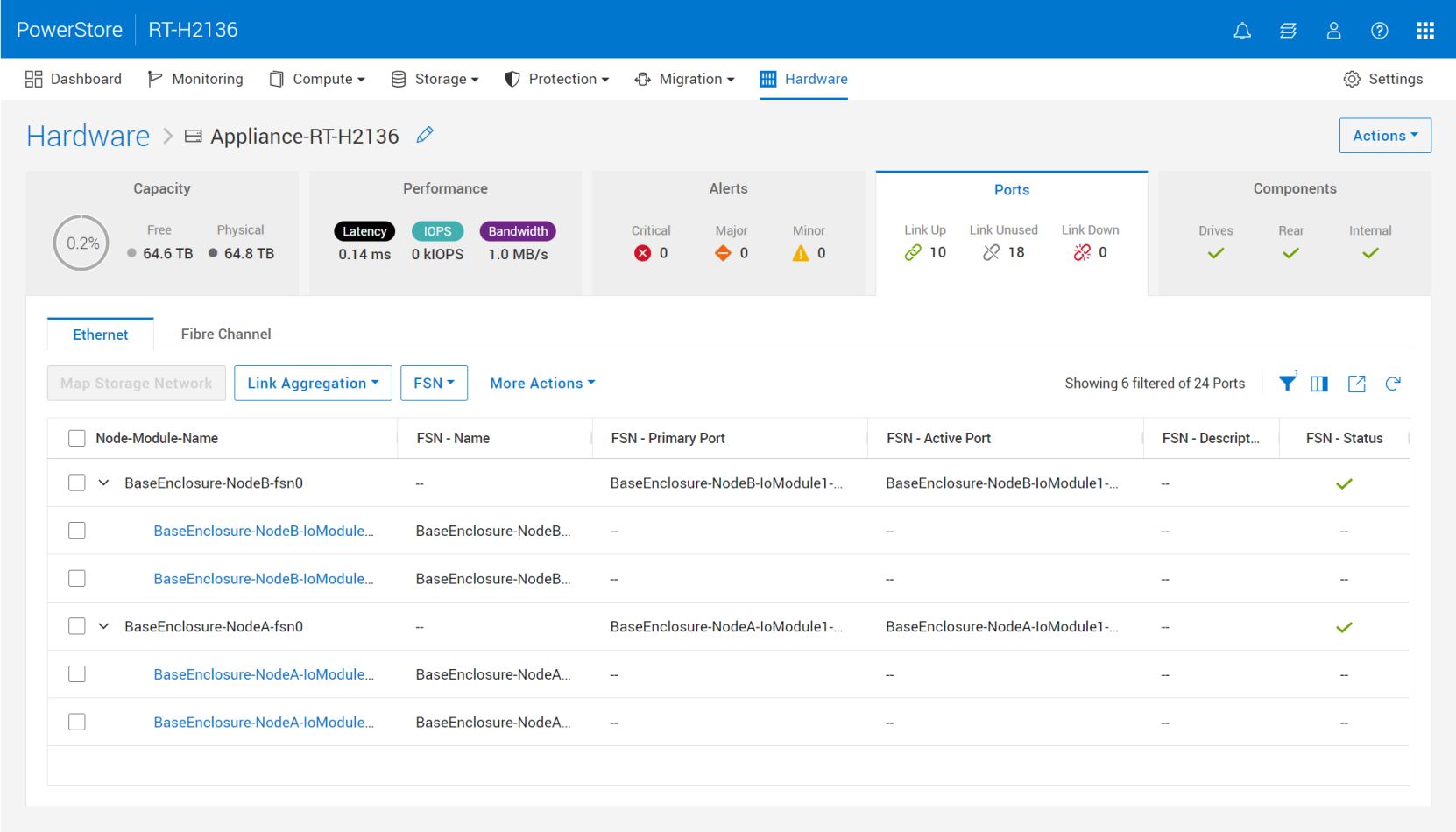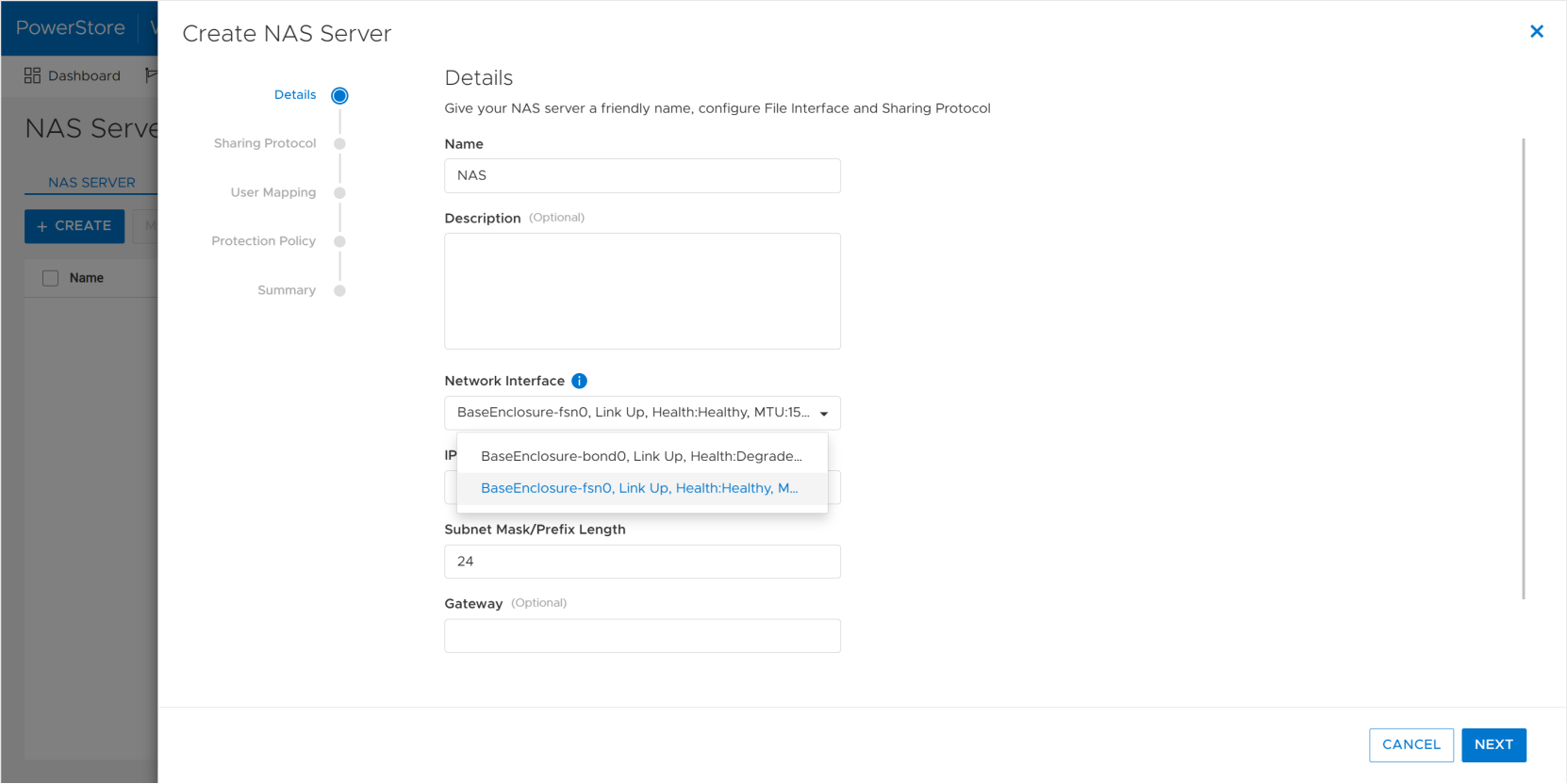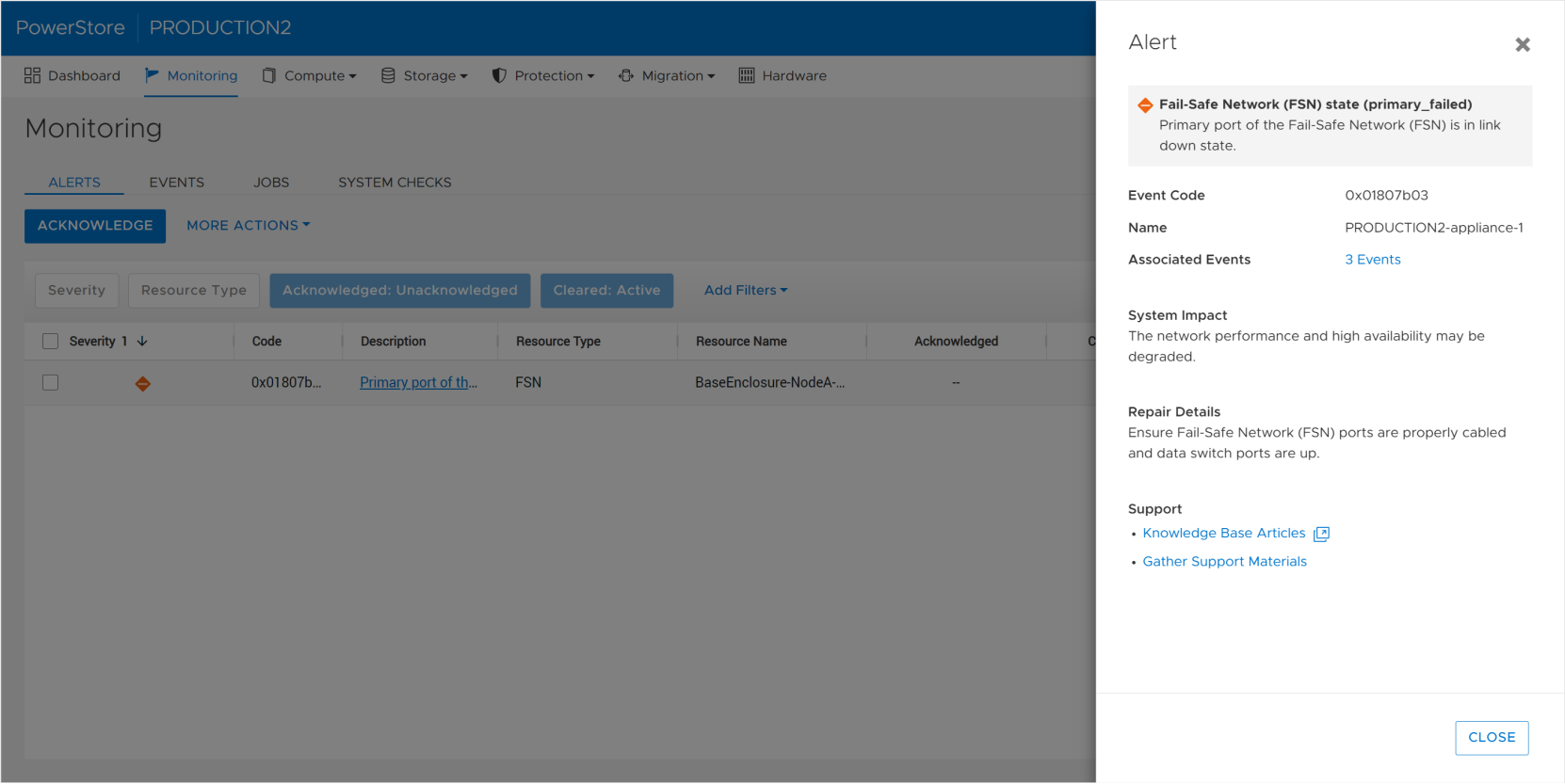Home > Storage > PowerStore > Storage Admin > Dell PowerStore: File Capabilities > Fail-Safe Networking (FSN)
Fail-Safe Networking (FSN)
-
PowerStoreOS 3.5 adds Fail-Safe Networking (FSN) support for file interfaces. FSN is a high-availability feature that enables configuring ports in a primary/backup configuration. Under normal circumstances, the primary ports are designated as active and are used to service I/O. If all primary ports of an FSN go offline, the backup ports automatically become active and continue to service I/O. This feature enables redundancy in case of port, cable, or switch failure. When the primary ports are restored, the system automatically makes the primary ports active again.
FSN can be leveraged to increase resiliency in file networks, especially when Multi-Chassis Link Aggregation Group (MC-LAG) is not configured on the top-of-rack (ToR) switches. MC-LAG enables the ability to create LAs across multiple switches. Without MC-LAG, LAs are limited to a single physical switch. If that switch goes offline, access to the NAS servers on that node becomes unavailable. Configuring FSN across multiple physical switches enables data access to continue even if a switch goes offline.
FSN is designed to be transparent to the switch, which enables it to work with any switch vendor and does not require any switch configuration. The FSN exposes a single MAC address to the network, so it appears as a single link. An FSN can potentially have multiple IP addresses on it if it is used for multiple NAS server interfaces.
An FSN can consist of individual ports, LAs, or a combination of both. When FSN is used with LA, multiple ports can be used as part of the active or backup part of the FSN. Leveraging both FSN and LA together provides high availability as well as load balancing. If the primary side of the FSN uses an LA, all ports of the LA must go down for the backup side to become active. You cannot put the System Bond into an FSN.
An FSN can be created using different configurations on the primary side and backup side. Members of an FSN can have different speed and duplex settings but must have the same MTU. Ports from different I/O modules on the same node can be used in the FSN. FSNs created with more ports on one side than on the other are also allowed. However, having a mismatched configuration might have performance implications in failure scenarios.
To create an FSN in PowerStore Manager:
- Go to Hardware > Appliance > Ports, and select two ports or LAs, or one port and one LA, from the same node.
- Go to FSN > Create FSN, and select the port or LA that will be the primary.
The system automatically designates the other port or LA as the backup. The members and primary link of the FSN cannot be modified after the FSN is created. You can add an optional description, which can be changed at any time.
- Click Create to create the FSN, as shown in Figure 8.

Figure 8. Create FSN
The FSN is automatically created on both nodes. A name for the FSN is generated automatically and cannot be changed. The FSN naming convention is BaseEnclosure-Node<A|B>-fsn<#>, where:
- A or B represents the node.
- There is a separate FSN device for each node for monitoring purposes.
- # is an incrementing number.
- The first FSN number is 0.
- Any gaps in the numbering are filled by the next FSN that is created.
New columns are added to show the FSN details. These columns are hidden by default but can be enabled using the column selector. Figure 9 shows the new FSN columns.

Figure 9. FSN columns
With PowerStoreOS 3.5, NAS server interfaces can be created on any type of bonded ports. The bond can be a LA, FSN, or a combination of both. Creating a NAS server interface on an individual port without a LA or FSN is not allowed due to the lack of redundancy. Figure 10 shows how to create a NAS server interface on an FSN.

Figure 10. Create NAS server interface on an FSN
Any changes to the FSN status are captured in the event log. Depending on the potential impact, an alert might be displayed to inform the storage administrator of the status change. For example, if the primary port of the FSN goes down, a major alert is generated, as shown in Figure 11.

Figure 11. FSN port down alert
